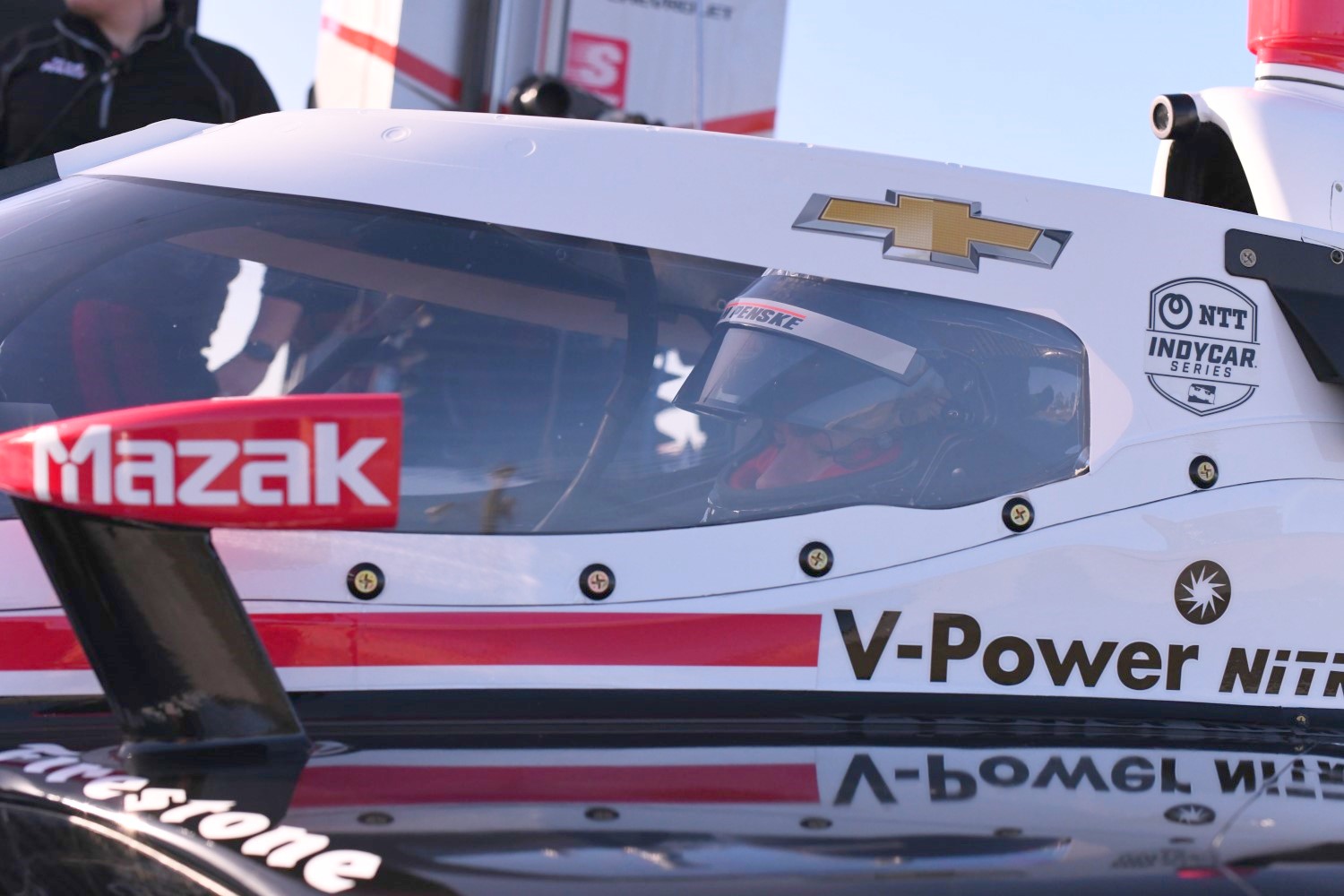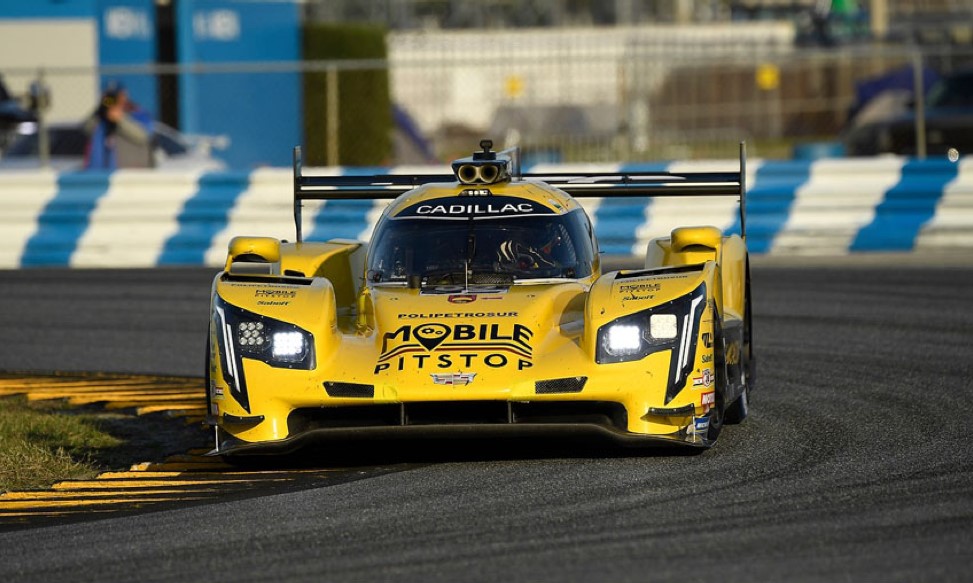As IndyCar & IMSA go hybrid, auto industry dumps it
 |
| Penske Chevy IndyCar |
A Day Late And a Dollar Short, isn't that the life story of IndyCar and IMSA?
After dragging their feet with hybridization of their power units for their top categories – IndyCars and Daytona DPi prototypes – when the automobile industry was spending tons of money on R&D on hybrid engines for their passenger cars, they recently had a Come to Jesus moment and decided they must now implement hybrid power by 2022.
But recently a dose of reality smacked them right in the face when it dawned on them that near zero R&D is going into hybrid technology today after Elon Musk showed them that 100% electric cars and trucks are the future.
Most manufacturers are phasing out hybrid power units because it makes zero sense to put two forms of propulsion in a vehicle – electric and internal combustion – and incur added cost, added complexity and wasted room and weight that can be used by the superior form of propulsion – electric motors.
There is a general recognition in the industry now that battery technology is advancing to the point that range is becoming a non-issue and the cost per KwH of battery is dropping dramatically. We are almost at a break even point between internal combustion vehicles and electric vehicles when all costs are factored in.
And then there is the environmental aspect.
Mazda and Cadillac say no to IMSA
 |
| #85 IMSA Cadillac DPi |
Two of the three current DPi manufacturers in the IMSA WeatherTech SportsCar Championship revealed they have no interest in the addition of hybrid powertrains into the next-generation formula, although admitting it wouldn’t be a “dealbreaker" as long as costs remain under control.
Both Mazda and Cadillac have publicly stated their views in IMSA’s planned integration of a spec hybrid powertrain into the so-called DPi 2022 regulations.
When asked by Sportscar365, Mazda’s new motorsports boss Nelson Cosgrove echoed his company’s beliefs.
“From a Mazda standpoint and our cycle plan, we believe from the top down that there’s still a lot to get with internal combustion engines," Cosgrove said.
“We feel an ICE engine [only] is where we’d probably prefer to be. But if it was a spec hybrid system and that’s what the series went with, I don’t think it’s a dealbreaker."
Cosgrove has expressed concern of potential complications when adding hybrids to the mix.
“Moro-san [Masahiro Moro, Mazda North America CEO] has an interesting philosophy," Cosgrove said.
“The ICE is pretty well understood how to control it. [Full] electric is pretty well understood how to control it. If you mix those two things together, it gets really difficult."
[adinserter name="GOOGLE AD"]GM Racing director Mark Kent shared similar beliefs to Cosgrove and Mazda, particularly with the production path Cadillac is headed.
The luxury automaker is set to concentrate on all-electric vehicles in its roadmap, having recently eliminated several hybrid models from its lineup.
“We are going all-electric," Kent told Sportscar365 in October. “We’re not headed down a hybrid path.
“If it’s good for the series, if it will help the series, then we’ll support it.
“But our position has been that it’s got to be a spec system that we don’t get into a spending war on technology on hybridization. What is the right system and does it make sense?
“IMSA’s doing their due diligence on what’s possible and we look forward to what they come back with and see if it’s something we can support."
Will going Hybrid land IndyCar their coveted 3rd Engine Manufacturer?
 |
| IndyCar Dog barking up the wrong tree |
Probably not. IndyCar's TV package is the reason why it cannot land more sponsors and engine manufacturers (low viewership, zero global TV distribution).
With the world moving away from hybrids and toward all electric, why all of a sudden switch to hybrid power now? It's the perfect example of a dog barking up the wrong tree.
Chevy has dumped the hybrid Volt and 2019 was the last year for the hybrid Malibu. Their R&D is going into 100% electric cars.
Honda, IndyCar's other engine manufacturer, does remain heavy into hybrid power units across many cars in its lineup and it expects to remain that way at least until 2030.
Takahiro Hachigo, CEO of Honda Motor Company, sat down for a year-end interview with Automotive News Europe recently to share his views on the future of the auto industry.
His take? More efficient manufacturing, more autonomous driving systems, and pistons – lots and lots of pistons. The future of motoring is about efficiency, Hachigo-san believes, and hybrid powertrains are what he sees as the route to that efficiency. By 2030, he expects two-thirds of the cars his company manufactures to be hybrids. He makes no mention of them having plugs.
“I believe hybrid vehicles will play a critical role. The objective is not electrification, per se, but improving fuel efficiency. And we believe hybrid vehicles are the way to abide by different environmental regulations."
On the subject of battery electric vehicles, he asked, “Are there really customers who truly want them? I’m not so sure because there are lots of issues regarding infrastructure and hardware. I do not believe there will be a dramatic increase in demand for battery vehicles and I believe this situation is true globally. There are different regulations in different countries, and we have to abide by them. So it’s a must to continue R&D in electric cars. But I don’t believe it will become mainstream anytime soon."
But it he dead wrong?
Obviously, GM, Tesla and Volkswagen disagree. VW owns Porsche and the performance of the new Porsche Taycan is a smack-down of almost all their internal combustion models. VW is going 100% electric across their entire model line.
GM's goal is to abandon the internal combustion engine entirely. At some yet-unspecified point, all of its products will draw power either from batteries or hydrogen. Fuel cells are sometimes referred to as “refillable batteries." They rely on devices called stacks to combine hydrogen and oxygen from the air to produce water vapor and electric current. That power is used to drive the same sort of motors used in battery-cars.
So what is IndyCar and IMSA to do?
They want to be relevant to the auto industry to attract manufacturers, but why did they wait so long? F1 went hybrid back in 2009 when it introduced KERS as a driver aid for passing. IndyCar was asleep at the wheel and now 13 years later, in 2022, they will do it.
Both series are stuck between a rock and a hard place because they know losing the visceral experience of an internal combustion engine could lose them the few fans they have remaining.
They realize that 100% electric is the future, but they're pretty certain going that route might be the end of their sport. Race cars that sound like sewing machines are not exciting.
Or is it? Formula E is gaining in popularity, something we never thought possible.
But Formula E races are limited to 45-minutes in length. Today's battery technology is not good enough for a 500-mile race, and stopping for 5 minutes to recharge (using an 800-volt architecture) just does not work.
Could you see the Indy 500 run in five 100-mile heat races? We can't.
Ditto for a 6-hour or a 24-hour endurance race. Same problem – the battery technology is just not there yet to go with 100% electric propulsion.
So for now both series has decided to go the 'spec' hybrid route to keep the cost of hybrid technology down with the hope manufacturers will at least have some interest.
And through this decade that should work, but by 2030 a change is going to be needed and hybrids may have to be phased out because by then 100% electric may have overtaken the entire automobile industry.
Could staying 100% ICE work?
Could staying with 100% internal combustion engines (ICE) work? We know from a fan experience perspective the sweet sound of an ICE power unit connects with humans.
But can a race series survive if eventually all the automotive manufacturers go away because they do not want to be associated with ICE engines that burn fossil fuels and pollute the air? Right now we would have to say probably not.
And going 100% electric could also mean their demise because the sound will be lost.
There might be a solution
Formula 1 is looking to introduce two-stroke engines that run on eco-fuel by the middle of the decade, as it develops plans to become carbon neutral according to Motor Sport Magazine.
The proposal is said to make the sport greener than electric racing series, such as Formula E, while still using internal combustion engines — with improved sound.
Current F1 hybrid engines will be replaced by a new specification of power unit from 2025 or 2026. It will play a significant role in Formula 1’s project to become carbon neutral in 2030.
"I’m very keen on it being a two-stroke," said Pat Symonds, chief technical officer of Formula 1, at the Motorsport Industry Association’s energy-efficient motorsport conference.
"Much more efficient, great sound from the exhaust and a lot of the problems with the old two strokes are just not relevant any more."
The new engines are likely to remain hybrids but powered by synthetic fuel, made by combining hydrogen with carbon captured from the air, using surplus green energy.
As well as the cars, this e-fuel could power the planes that carry the cars and equipment to races, making a big dent in the sport’s carbon footprint.
2-Stroke vs 4-Stroke
One of the main differences between 2-stroke and 4-stroke engines is that 4-strokes need an additional revolution of the crankshaft to complete the intake, compression, power and exhaust cycle. In this type of configuration, a 4-stroke engine can distribute the firing of its cylinders over the first stroke, leaving the second stroke just for resting.
In the case of a 2-stroke screamer, the engine must fire at regular intervals within one 180° turn of the crankshaft, or each half-revolution, firing four times in each cycle of two revolutions. To return to the 4-stroke configuration, it is necessary to put all these power strokes together, but as it takes more time to make a complete cycle, this arrangement is not optimal. To compensate for the long rest time, the power strokes can take place within a 90° margin. This configuration, in which the firing interval is much longer but still leaves one complete revolution for resting, is also known as a long bang.
Time to Research
Research presented at the conference showed that electric racing cars could be responsible for twice the level of carbon emissions as hybrid racing cars, because of the amount produced when building the batteries.
"We need to look at what our future power units will look like," said Symonds. "At F1 this is what we are engaged in at the moment."
He said that the sport’s pledge to continue with the current engines until 2025 gave it the time to "make sure that the next step is a really good one".
"It might be that the next power unit we produce is the last one we do with liquid hydrocarbons," he said. "I think there’s a very high chance that there might still be an internal combustion engine but maybe it’s running on hydrogen.
"I certainly think that the internal combustion engine has a long future and I think it has a future that’s longer than a lot of politicians realise because politicians are hanging everything on electric vehicles.
"There’s nothing wrong with electric vehicles but there are reasons why they are not the solution for everyone."
Symonds said that he is currently visiting universities carrying out engine research to inform the new regulations.
He told the conference that he was struck by the amount of research going into two-stroke engines, which are better-known for their smoky and noisy performance in lawnmowers, rather than their potential at the pinnacle of motor sport.
"It’s reasonably obvious that if you are going to pump that piston up and down, you might as well get work out of it every time the piston comes down rather than every other time the piston comes down," he said.
"The opposed piston engine is very much coming back and already in road car form at around 50 per cent efficiency.
"Direct injection, pressure charging, and new ignition systems have all allowed new forms of two-stroke engines to be very efficient and very emission-friendly. I think there’s a good future for them."
AutoRacing1's Take
IndyCar should do whatever F1 decides to do, but use more standard parts in whatever route they take to keep costs lower.
If this 2-stroke concept with more advanced non-polluting fuels takes off, IndyCar could have the solution they were looking for – screaming engines that do not pollute much, and a form of propulsion that any company selling sportscars – Ferrari, Porsche, Corvette, Aston Martin, Lamborghini, etc. – could support in a big way.
And if the 2-stroke concept does not pan out? By 2025 we should have a clearer picture whether race fans might accept 100% electric propulsion and the battery technology will be feasible for 500-mile and 24-hour races because the battery recharge times are reduced to seconds (think Supercapacitors).
As for sound? Do what Porsche did with the Taycan – with the flip of a switch they introduce artificial sound to enhance the experience.
When race cars do someday go 100% electric, will the sound you hear in the grandstands be artificial and emitting from speakers built into the car, but so good it will knock your socks off?
Maybe someday race cars will be backed by the best loudspeaker companies in the world – Harmon Karden, Bose, Sony, Klispsch, Bower & Wilkins, and Sennhauser and the sound you hear will be unique to each car manufacturer – developed by sound engineers in their labs?
Mark C. reporting for AutoRacing1.com
